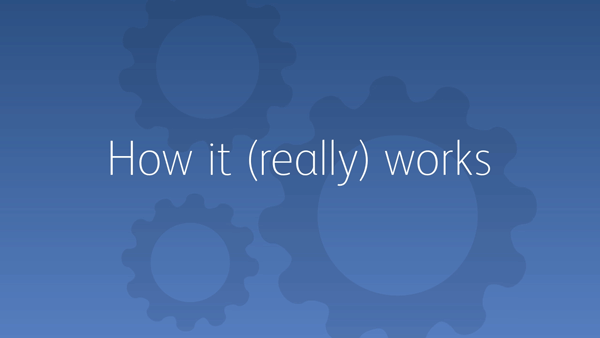
3 Reasons Why Video is Perfect for Benefits Communication
Benefits professionals are increasingly borrowing a page from the consumer marketers’ playbook to promote benefits in ways that captivate employees. From campaigns with catchy slogans to visuals that pop, it’s all about getting employees to hear your message and engage with it. Video captures people’s attention—even if it’s for a short time—giving you a unique opportunity to a) initially engage any employee; b) give employees useful information in an appealing format; and c) potentially reach those employees who have never really engaged much with benefits.
The statistics bear this out: Video accounted for 70% of all online traffic in 2015, and it will grow to an estimated 82% by 2020. Including a video in an email can double or triple click-through rates. Video is no longer a nice-to-have feature; users expect it as part of their online experience, and we’re not just talking about cat videos, here. Seventy-five percent of executives watch work-related videos on business websites at least once a week.
Like any other successful benefit communication, to be successful your videos need to carry your message in your voice, with visuals that align with your brand. Because employees trust health and financial information they get from their employer, only custom, company-branded videos can fully leverage that credibility.
What’s the takeaway here? For the best shot at engaging your workforce in employee benefits, video should be part of your communication strategy.
The top three reasons to use video for your benefits communication:
1. Videos are engaging
Have you ever tried to read something online and been distracted by an animated ad on the page? No matter how hard you try to ignore the ad and focus on the text, you just can’t, until the movement stops.

Our eyes are hardwired for motion; it is the best way to attract and hold people’s attention. So, mix it up to get folks to connect when they haven’t before. If, for example, your wellness program hasn’t been getting a lot of traction with employees, think about creating a video that uses animation to grab their attention and drive engagement.
2. Video is great for explaining complex ideas
There’s a reason explainer videos are all over the web and news organizations are investing in video departments—videos are great at making complex ideas digestible. Think of video as the online equivalent of sitting down with an expert for a few minutes.
Have a new consumer health plan you need employees to understand? Afraid nobody gets how the ESPP works? Getting lots of questions about the new leave policy? These topics are all perfect for video.

3. Video resonates with people
Video is a unique medium because it can combine music, voice, humor, motion, and art to create the emotional connection people need to feel confident making an important decision. Videos can put a human face—and voice—on information. They can establish an emotional connection to help drive decision-making. To help bolster confidence in a new health plan, one of our clients created a video with a trusted, high-level executive talking about the importance of open enrollment, and walking employees through the new plan’s advantages.
There are so many ways you can use video to make that human connection. For instance, to showcase a program that’s unique to your company, consider gathering testimonials from employees who have used it. Your options here are limited only by your imagination.
Need some more ideas about how to use video for your communications? Check out our motion graphics reel at the top of this post. It includes a wide variety of benefits topics. Let us know how we can help.
Work with Us
We partner with organizations that value their people first. Let’s talk.

Brian Bookwalter, VP Art Director, serves as the point person for the production of all our video projects and has worked on campaigns across a wide variety of topics.
